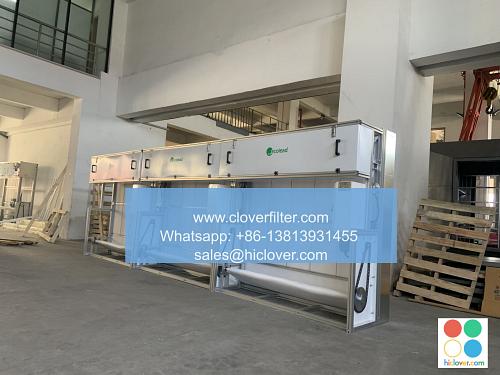The Future of Air Purification: Advances in Filter Design and Materials

The Future of Air Purification: Advances in Filter Design and Materials
Introduction
Air pollution is a growing concern worldwide, with the World Health Organization (WHO) estimating that 9 out of 10 people breathe polluted air. As a result, the demand for effective air purification systems has never been higher. In this article, we’ll explore the latest advances in filter design and materials, highlighting their potential to revolutionize the air purification industry.
Advances in Filter Design
One of the most significant advancements in air purification technology is the development of new filter designs. Traditional HEPA (High Efficiency Particulate Air) filters, which capture 99.97% of particles as small as 0.3 microns, are still widely used. However, newer designs have improved upon this technology.
- Electrostatic Precipitators (ESPs): These filters use electrostatic charges to attract and capture particles, making them more efficient and effective than traditional HEPA filters.
- Activated Carbon Filters: These filters use activated carbon to capture gases and odors, making them ideal for applications where chemical pollutants are present.
- Cyclone Filters: These filters use centrifugal force to separate particles from the air, making them more efficient and cost-effective than traditional HEPA filters.
Advances in Materials
In addition to advances in filter design, researchers have also made significant breakthroughs in materials science. New materials are being developed that can improve the performance and efficiency of air purification systems.
- Nanofibers: These ultra-fine fibers have been shown to capture particles as small as 0.01 microns, making them ideal for applications where extremely high levels of purification are required.
- Graphene: This highly conductive and flexible material has been shown to improve the efficiency of air purification systems by up to 50%.
- Smart Materials: Researchers are developing smart materials that can detect and respond to changes in air quality, making air purification systems more effective and efficient.
Application Areas
The advances in filter design and materials have far-reaching implications for various application areas.
- Residential Air Purification: New filter designs and materials can improve the effectiveness and efficiency of residential air purification systems, making them more effective at removing pollutants and allergens from the air.
- Commercial Air Purification: Advances in air purification technology can improve the indoor air quality in offices, schools, and hospitals, reducing the risk of respiratory problems and improving overall health.
- Industrial Air Purification: New materials and filter designs can improve the efficiency and effectiveness of industrial air purification systems, reducing emissions and improving worker safety.
- Automotive Air Purification: Advances in air purification technology can improve the air quality inside vehicles, reducing the risk of respiratory problems and improving overall health.
Conclusion
The future of air purification is bright, with advances in filter design and materials set to revolutionize the industry. As researchers continue to develop new and innovative technologies, we can expect to see significant improvements in air quality and a reduction in the negative health effects associated with air pollution. Whether it’s residential, commercial, industrial, or automotive applications, the future of air purification is poised to make a significant impact on our health and well-being.
I’d be happy to help! What would you like to talk about or ask?


